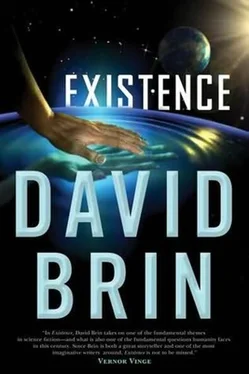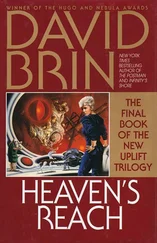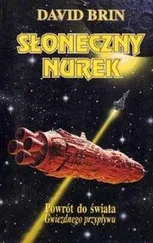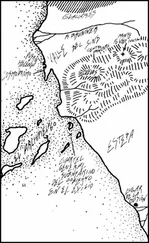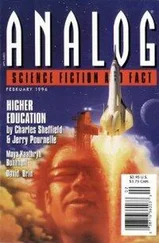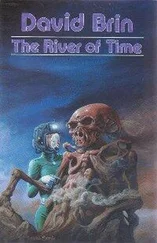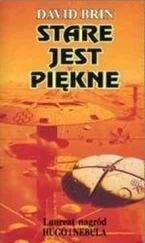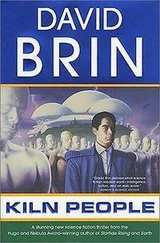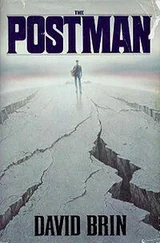Strangely, it was the sight of Om’s fury that started Hamish down the road of lessening his own. He looked at Emily Tang, who had the most reason to feel shocked and betrayed. The famous science-heroine of the century, her great idea led to the miracle of reviving extinct alien intelligent species, adding them to Earth’s great stew, and thus converting some of the crystal-artilens into allies. A method that seemed to immunize against the Plague. A technique that countless Earthlings deemed worth spreading across the stars. A care package of hope called the Cure.
Our fleet of ten million was portrayed as the vanguard of many more. A gift from Earth. A great inoculation to end more than a hundred million years of galactic disaster! Only then…
Only then, what happened?
The Gerald Livingstone message herald had explained what humanity’s brightest minds believed, though they had kept their conclusion secret for a time. A dour deduction that Hamish reached, all by himself, just hours ago.
That the Cure was an excellent step, a palliative, even a short-term remedy… but nothing like a grand, overall solution.
Perhaps only one percent of techno-sapients ever thought of it or implemented it correctly. Still, over time, the disease would have found ways to trick even those clever ones. The missionary zeal that swept Earth-an eagerness to generously help spread the Cure-that very zeal seemed proof the infection still operated! More subtly, but still aimed at the same goal-
– for humanity to go into an insatiable, endless sneezing fit, aimed at the stars.
No. The best minds on Earth-human, ai, dolphin, and others-all concluded. We aren’t ready yet. If we set forth now, even carrying the so-called Cure, we’ll just be part of the problem.
The way Turbulence Planet must have spent itself into exhaustion, spewing forth “warnings” that also carried traps.
No, there is only one course of action that makes sense, right now.
To learn more.
We have to find out what’s happening out there!
Given all of that, Hamish felt awed and humbled by Emily Tang, the author of the Cure. There she stood with the others. Calmly moving past any disappointment-arguing, discussing, helping to plan the next stage.
Their mission. The real mission. One that ought to make Lacey Donaldson-Sander proud. Hamish glanced at her, now vibrant with eagerness. The one whose dream was coming true.
We are a telescope.
That summed it up.
I am a component of a telescope. Hamish weighed a strange mixture of humility and hubristic pride. It is my purpose. My reason for existence. The greatest telescope ever conceived by Man.
Possibly the greatest ever made by anybody.
Feeling his pseudo-heartbeat settle from outrage to mere resentment, Hamish wandered back toward the gathering. At least thirty virtual persons, human and alien, now clustered around a giant book left by the Gerald ai-herald, before it departed once more for the depths, with a jaunty salute.
Exploring the Galaxy from Our Home System.
Using the Sun as a Gravitational Lens.
Hamish didn’t quite get the concept. But he could always ask Lacey to explain things. I did start with a scientific education after all , before becoming a critic-gadfly. A bard of imaginary dooms.
But that left a burning question.
Why me?
Why any of us? Why not just send ten million robots to gather data for century after century, programmed to do it well and like it?
Something about crystal probe technology, packed with virtual personalities, must make it ideal for collecting and massaging vast amounts of data. Looking at his fellow AUPs, some choices were obvious. Birdwoman could probably handle the number crunching single handed.
And Lacey, all her life had led to this. Likewise, Emily, Singh, Courier, M’m por’lock and other science types. They already grasped the purpose and were eager to get started.
At the other extreme were those Hamish deemed useless-purely along for the ride-the oligarchs and other freeloaders who were uploaded for this trip because their money paid for it. They might play magic-wish games down below for ages, never caring that their voyage had been hijacked.
All right. But why is Om aboard? Hamish glanced at the Oldest Member, still pacing and muttering angrily, and realized.
We’ll learn a lot by observing him, whenever data comes in about some distant star system. Even if Om tries to deceive, we’ll have ten million versions of him to compare and contrast. Over time, we’ll poke and pry their paths apart, dissecting his deepest programming, perhaps developing an artilen lie detector!
Hamish smiled, knowing one of his roles.
No one was ever better at “poking” than me. I’ll be his chief tormenter!
And yet-
Was that all?
His only way to be useful?
Perhaps they expected me to join the playboys, down below.
He rebelled against that glum appraisal. Hamish glanced at Lacey.
“No way. I was one of the ‘key’ wielders!”
The four who spoke in unison to open the box and begin transforming their ship into a telescope. That meant he was important, even indispensable! But how?
There must be a talent. A skill he brought along. Something he did supremely well.
And, of course, it was obvious.
DETECTION
Your Mission as a Big Telescope
Thirty-five years before your probe was launched, along with ten million others in Operation Outlook, a much smaller experiment dispatched sixty-four primitive capsules to a zone between Uranus and Neptune. Their purpose? To test an exceptional idea and exploit a quirk of nature.
Way back in the early twentieth century, Einstein showed that heavy objects, like stars and clusters, warp space around them, bending waves that pass nearby. This gravitational lensing effect has let astronomers peer past a few massive galaxies and observe objects so distant, their light departed at the dawn of time.
Till now, these rare viewing opportunities were flukes of astronomical position. We could never choose what to look at.
Then an Italian astronomer, Claudio Maccone, began pushing a strange insight. That we might have a gravitational lens of our very own, nearby and available.
Our sun. Calculations showed that Sol’s mass ought to bend space, refracting any radiation that skims near its surface, so that distant objects would come into focus in a few special places.
The nearest and most accessible of these regions lay between the orbits of Uranus and Neptune, a shell completely surrounding our star, twenty-two through thirty astronomical units out. Only certain kinds of radiation would converge in this zone. Just gravitons and neutrinos . Still, a mission was sent, and sixty probes returned valuable data, including breakthrough knowledge about the origins of the solar system.
That experiment told us nothing about far civilizations, nor did it answer our most urgent questions. Still, the concept was proved.
And we confirmed there is another zone, much farther out. A shell where our sun brings into focus a different kind of radiation.
One called light .
APPRECIATION
The Great Telescope’s design grew gorgeously clear to Lacey. Ten million crystal probes, each aiming a hundred kilometer lightsail-mirror back at the sun, peering at the warped glow of distant stars and planets, magnified by Sol’s gravity. A faint, slender ring, surrounding a raging ball of fire.
Читать дальше
